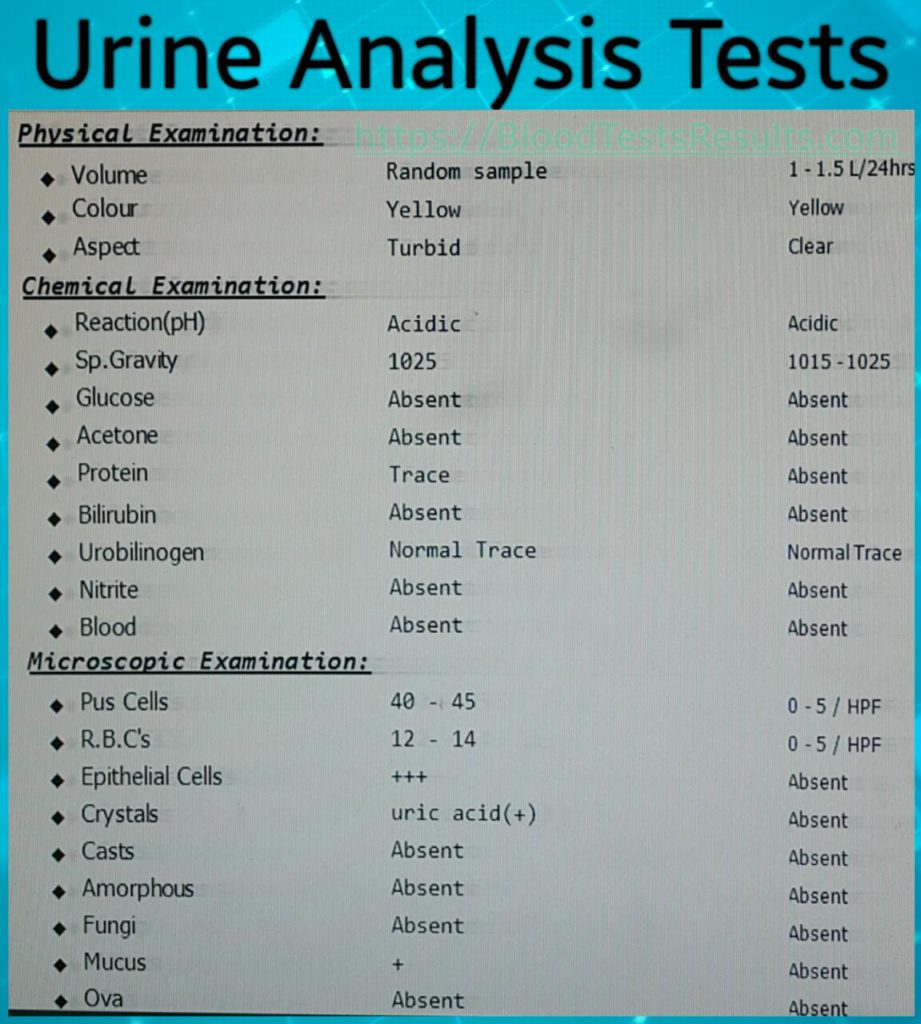What can be detected in a urine test?
In a brief, urine tests or urine analysis can detect up to 25 parameters which help evaluate your urinary system health and other body functions.
The tests included in the routine urine analysis are classified into three main groups;
- Physical examination of a urine sample by naked eyes, also called “macroscopic examination, this exam including the Aspect, color, volume, and if there is blood or worms by our eyes without microscope magnification.
- Chemical Examinations of a urine sample by the urine strips, a kind of strips contain special chemicals each of which is a chemical urine test, that include proteins; glucose; ketone; bilirubin; urobilinogen; nitrite; ascorpic acid; blood hemolysis; leucocytes; specific gravity; and urine reaction
- Microscopic examination of the urine sample sediment to detect and count pus cells; red blood cells; epithelial cells; casts; crystals; ova; larvae; bacteria; fungi; and amorphous materials.
Later we will add full description for each test in the urine analysis and why doctors need such tests to evaluate many health issues.
You can learn more about:
The 5 test drug panel in urine
